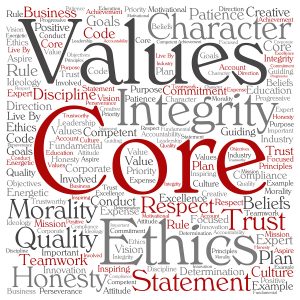Leadership Starts with Culture
Uber’s corporate culture problems began long ago. You could probably say they began at the beginning.
The corporate culture in Uber from the beginning was one of “always be hustlin'” and “stepping on toes” according to an article in BGR. In a culture that hinges on that philosophy, you can expect that there will be personality conflicts. In addition you can expect harassment and abuse. It creates a no-holds-barred atmosphere where the only thing that matters is winning and crushing the competition.
What results is an eventual disintegration of the organization and the business.
Lack of Strong Corporate Culture Brings Disastrous Results
What’s resulted for Uber with this?
- Most recently, the resignation of CEO Travis Kalanick.
- Earlier in this year, the departure of 7 additional senior executives.
- Sexual Harassment Lawsuits.
- Uber drivers attempting to organize AGAINST Uber.
- 200,000 users delete the Uber app from their phones in protest to Uber’s actions during the NY Taxi Driver protest
- The apparent revelation that Uber has implemented systems to circumvent the law
Uber’s problem is clearly a top-down problem. It has created a poisonous corporate culture that has now put the organization in it’s current position of NO SENIOR LEADERSHIP at it’s most critical moment.
Before we go too far to eviscerate Uber management, however, we may want to see another picture.
More importantly for us than what Uber has done wrong is what we can learn from it and do right.
How Can Leadership Do Better?
Here’s some of the basic leadership lessons I see:
 Establish Core Values Early
Establish Core Values Early
It seems clear that a lack of real values exist in the corporate culture at Uber. When your primary drivers are to “Always Be Hustlin'”, promote “Meritocracy and Toe-Stepping”, and “Principled Confrontation” you easily fall into the trap of justifying behaviors for the sake of organizational success. Which is precisely what happened.
Case in point. Susan Fowler‘s blog post back in February of 2017. in the post she revealed alleged harassment and other abuses at Uber; along with a virtually powerless Human Resources department. When Fowler complained to HR about the manager she reported to directly propositioning her, she expected immediate results. Instead, she was told that while it was clearly sexual harassment the manager in question would simply be given a “stern talking to”. Why? Because he was a high performer and they didn’t want to ruin his career.
Core values place priorities where they belong and provide a barometer for the actions of every department and every employee.
I’m not a big operation right now, actually I’m barely a small operation. However, one of the first things I did when I started was to determine what was most important in what I do. I value trustworthiness, relationships first, and adding value to everyone. Through that, I can then gauge every word and every action around that. Anything that might jeopardize my trustworthiness, sacrifices relationships, or fails to add value simply is not appropriate. Failing to meet any one of these values is a deal breaker.
Set a Higher Standard for Senior Leadership
Whatever behaviors you expect out of your employees has to be not just exhibited but MAGNIFIED by leaders. This is especially true at the executive level.
Years ago I worked for an organization that in the business unit in which I worked started a large Total Quality Management campaign. Each and every employee not only had to develop a personal TQM statement, it had to be posted outside of their cubicle for all to see. I won’t even get into the insanity of creating cubicle world to promote total quality; that’s another talk for another time.
What made it fail was the lack of consistency at the executive level with this. Employees observed actions that were executed that seemed to fly in the face of most of the TQM principles. The reasoning then became that if they didn’t buy it, why should we?
Each senior leader needs to set the bar high for themselves because perception will always be a microcosm of reality. In other words, they will only see in their minds a small measure of what you actually are. If you want to promote trustworthiness, there is no room for moments where you aren’t so trustworthy; otherwise the perception is that you aren’t.
[tweetthis]Whatever behaviors desired in employees must be MAGNIFIED by leaders. #values[/tweetthis]
Place a Priority on the Care and Nurturing of Your People
Employees feel when they are NOT valued. They also feel it when they ARE valued.
Unless you are in an organization where the only person who ever talks to or serves a customer is you, then your employees are the real face of the organization. They will treat customers no better than they themselves are treated. So it only makes sense to place first value as a leader on your employees.
The Law of Reciprocity kicks in here. Treat people with respect and trust. Care for them professionally and personally. Help them get ahead. In return, they will commit more to you and the organization and treat your customers with respect and care.
Plan and Cultivate a Line of Succession
Teams (companies, organizations, throw your own word in here) of any size run in cycles. Leadership should and will eventually change. The ones that sustain success are the ones that have planned for that.
- Excellent teams have intentionally cultivated people to assume greater roles.
- They have embedded the core values in them.
- Leaders train and coach them.
- The Leaders have challenged them.
When that eventual change occurs, it’s almost seamless because the core values are still there. Even if some of the style changes, the core does not. The alternative is chaos while new leadership is identified and put in place; as well as for a long time after.
